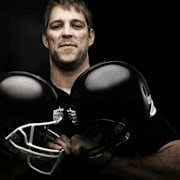Unlocking Strength: How Women Can Achieve Powerful Hypertrophy Gains

In a recent episode, we spoke with Antonio Squillante, Head of Sport Performance and Training at USA Cycling's National Track Sprint Program, on the science of hypertrophy and the physiological differences in strength adaptations between men and women. With a PhD in Biokinesiology and a decade of experience working with athletes, Squillante’s approach combines academic research and practical insights applicable to both elite and everyday athletes.
Squillante highlighted the crucial role testosterone plays in strength training. Present in significantly higher levels in men, testosterone is central to muscle growth and strength gains. While men have roughly ten times more testosterone than women, this does not mean women are limited in their potential for strength.
Squillante explained that when body mass and composition are accounted for, women can perform at levels of strength similar to men relative to their body size. “Once you start taking consideration not just body weight by body mass, pound per pound, women are almost just as strong as men are,” he noted. This suggests that while women might experience slower muscle adaptations due to lower testosterone, their muscles and connective tissues adapt effectively to strength training.
Testosterone is a major player in muscle adaptation, but it’s not the only factor. Both men and women can experience similar adaptations in response to strength training, including muscle fiber growth (hypertrophy), neuromuscular efficiency, and tendon strength. Squillante pointed out that, overall, tissue structure and adaptability are fundamentally similar in men and women.
In fact, Squillante mentioned that women may have advantages in certain types of adaptation, such as endurance and muscular recovery, due to physiological differences like higher levels of estrogen. Estrogen can aid in recovery and protect muscle tissue, which is significant for hypertrophy training, as it suggests that with the right approach, women can build and maintain muscle effectively over time.
Given these physiological differences, Squillante advocates for an individualized approach rather than a “one-size-fits-all” training model. Women, he suggested, might benefit from slightly higher training frequencies or more recovery-focused sessions to capitalize on their enhanced recovery capacity.
Squillante recommends a balanced hypertrophy training regimen that adjusts volume, frequency, and intensity based on each individual’s response. For women, a focus on proper form, gradual weight progression, and recovery can yield excellent results without overloading the body.
A key challenge Squillante noted in strength training research is the predominance of male subjects in studies, which means many findings don’t fully represent female athletes. “The majority of studies that we always base our assumptions on have been done on predominantly male subjects,” he said. This can make it difficult to create training guidelines that account for the physiological nuances of female athletes.
Squillante sees a need for more research focused on female athletes, especially at elite levels, to build more inclusive training guidelines. Understanding how women’s bodies respond to various types of strength and hypertrophy training could not only enhance performance but also reduce risks of injury and burnout that occur when training is not adequately adjusted for individual needs.
Squillante’s insights offer valuable guidance for optimizing strength training programs. Here are a few key points to consider:
1. Account for Hormonal Differences: Hormonal differences impact adaptation rates, so women may benefit from training programs that allow for additional recovery and incremental strength gains.
2. Focus on Relative Strength: Emphasize strength relative to body mass, rather than absolute strength. This approach highlights individual progress and helps track capacity without gender-based comparisons.
3. Encourage Data-Informed Training: Trainers should seek out studies that include female subjects and be open to adjusting traditional methodologies.
4. Adapt Recovery Protocols: Women may recover more effectively from certain muscle stresses, allowing for a higher training frequency without risking overtraining.
Antonio Squillante’s insights into hypertrophy and gender-specific adaptations highlight the importance of tailoring strength programs based on individual physiological needs. His call for more inclusive research is a reminder of the nuanced requirements in strength training and the need for data-driven, personalized approaches. This perspective empowers athletes and coaches to achieve optimal results while reducing risks, offering a path forward in performance training that benefits athletes of all genders.
